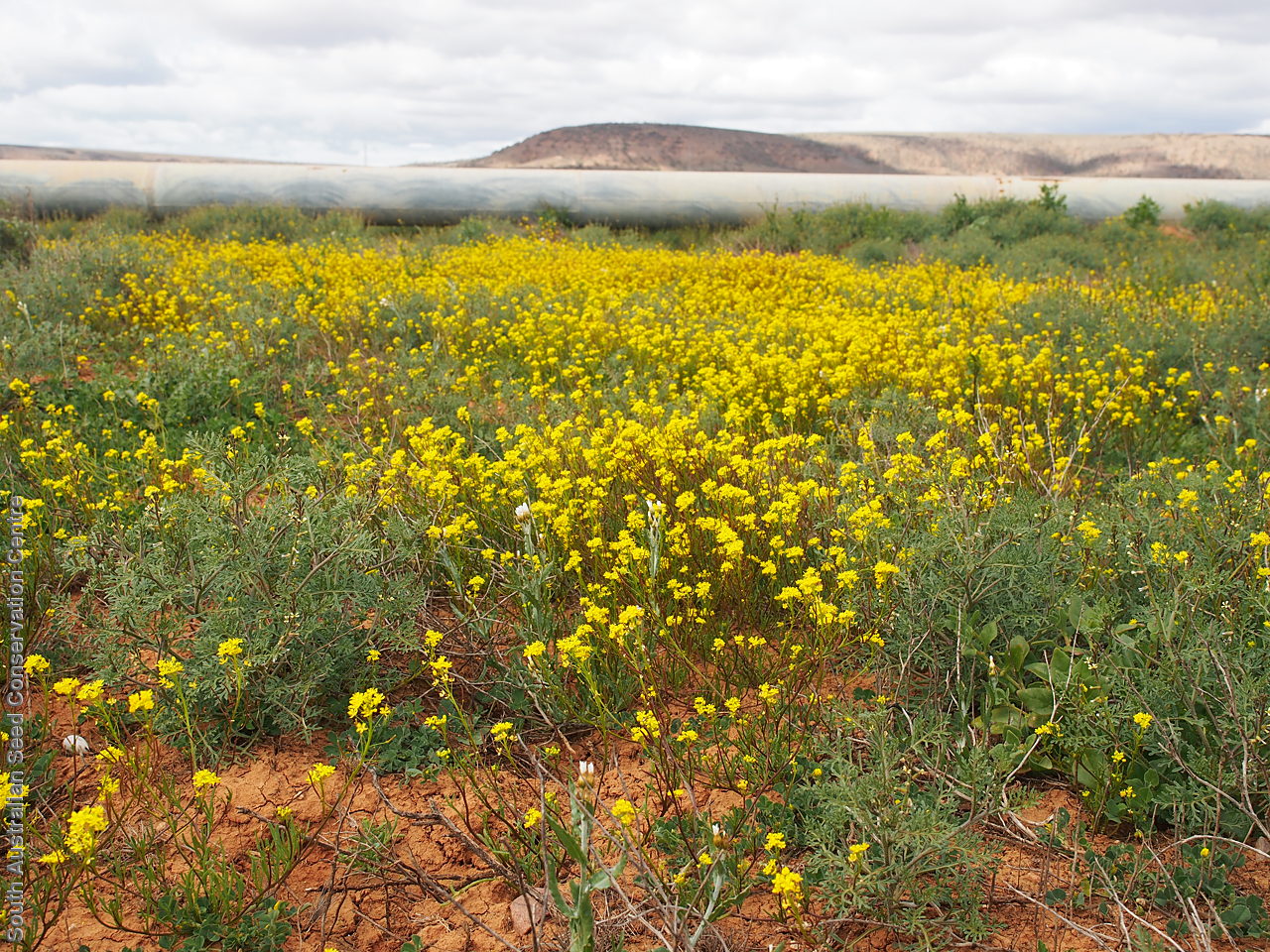



















Botanical art
Prior names
Blennodia nasturtium
Sisymbrium nasturtioides
Micromystria nasturtium
Erysimum nasturtium
Blennodia nasturtioides
Etymology
Arabidella a diminutive of 'arabis' which is a Greek word for mustard or cress. Nasturtium from the Latin 'nasus tortus' meaning twisted nose, a Latin name for garden water cress (Lepidium sativum) which has a sharp smell and taste that will give you a "twisted nose", possibly referring to the plant's pungent odour.
Distribution and status
Found in the north-eastern part of South Australia growing in a variety of habitats on disturbed soil or near temporary water. Also found in all mainland States. Native. Common in South Australia. Uncommon in Western Australia, Northern Territory and Victoria. Common in the other States.
Herbarium regions: Lake Eyre, Gairdner-Torrens, Flinders Ranges, Eastern, Eyre Peninsula, Murray
NRM regions: Northern and Yorke, South Australian Arid Lands, South Australian Murray-Darling Basin
AVH map: SA distribution map (external link)
Plant description
Decumbent to erect annual herb to 50 cm tall, glabrous. Leaves multisect to 3 cm long; segments linear. Flowers are yellow along a long flower spike. Flowering between May and October. Fruits are long narrow pods to 3 cm long on a long spike. Seeds are tiny yellow semi-flat reniform seeds to 0.8 mm long and 0.5 mm wide. Seed embryo type is bent.
Seed collection and propagation
Collect seeds between August and December. Collect pods that are maturing, drying off and turning brown, with yellow seeds inside. Place pods in a tray and cover with paper to prevent seeds from popping out and leave to dry for a week. Then rub the pods gently with your hands to dislodge the seeds. Use a sieve to separate they unwanted material. Store the seeds with a desiccant such as dried silica beads or dry rice, in an air tight container in a cool and dry place. This species has physiological dormancy that need to be overcome for the seed to germinate.
| Location | No. of seeds (weight grams) | Number of plants | Date collected | Collection number Collection location | Date stored | % Viability | Storage temperature |
|---|---|---|---|---|---|---|---|
| MSB | 29,500 (1.95 g) | 16-Sep-2008 | PJA172 Eyre Peninsula | 100% |
Number of plants: This is the number of plants from which the seeds were collected.
Collection location: The Herbarium of South Australia's region name.
% Viability: Percentage of filled healthy seeds determined by a cut test or x-ray.